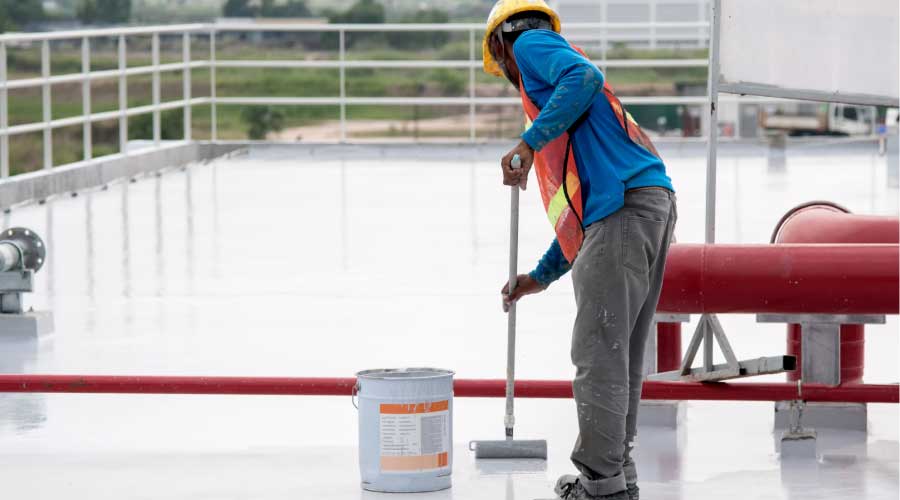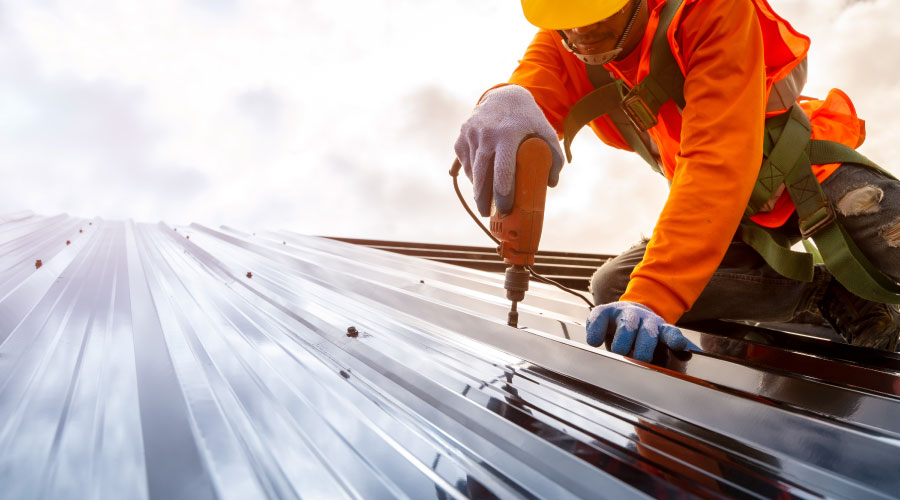Metal Roof and Wall's Durability and Versatility
Since ancient times, people have been building with metal and Europeans have been using metal roofing for hundreds of years. But relatively recent technological advances have increased the use of metal in American construction. Metal roofing and wall systems are increasingly the choice of facility managers for both new structures and retrofits.
About 10 percent of the commercial roofing market in 1995 was using metal, whereas today that figure is at 22 percent, says Mark James, vice president of sales and marketing at Roof Hugger. "There has been drastic growth in the use of metal for new construction and re-roofing," he says. For example, he notes that the U.S. Department of Defense has 290 million square feet of roofing on military bases, and more than half of the roofs are metal. "They've been retrofitting with metal for at least 20 years," he says. "In new construction it is virtually all they specify because of its long-term dependability and performance."
Metal roofing systems are less expensive on a life-cycle cost basis than other types of building materials, mostly because they last significantly longer. James says that metal's life expectancy is double that of its nearest competitor.
Most metal systems are made of steel coated with zinc (galvanized steel) or steel coated with zinc and aluminum (also known as Galvalume). Other metals used for roofing include aluminum, copper and tin.
A metal roof can last from 30 to 40 years and then be repainted and used for an additional 20 years, says Bill Croucher, director of engineering at Fabral. "If it's copper or zinc it will last hundreds of years," he says. "Typically a metal roof is initially more expensive, but costing it over its life cycle, it will be less expensive. There is little maintenance, and it will last significantly longer."
Metal roofs vary in first-cost expense, and for a product at the high end of the spectrum, such as a zinc roof, the materials will cost $5 to $10 per square foot, as compared to single-ply membrane roofs made of petroleum or a rubber-based product, which might cost $1 to $4 per square foot. "But keep in mind that an EPDM single skin, according to their own data, will last 20 to 25 years," says Dan Nicely, director of architectural sales at Umicore Building Products USA.
An unpainted zinc roof will have an average lifespan of 70 to 100 years, he says. Furthermore, tearing down and dumping in a landfill a petroleum-based roof will also be expensive. When maintenance and life-cycle costs are taken into consideration, a metal roof is cheaper, he says.
Insulated metal wall panels are also less expensive on a life-cycle cost basis than conventional single-skin walls, according to Jeff Irwin, chief executive officer of the Benchmark Division of Kingspan Benchmark. Steel roofing or wall systems can be foam-core insulated and then coated and painted.
"The advantage of an insulated panel is that you put it up and you are done. For commercial/industrial applications, you save labor, and you are getting panels that span further and have better structural properties," says Irwin. Moreover, panels that are 30 feet wide by 20 feet long can be installed vertically or turned on their sides and installed horizontally, which is not the case with most other types of materials. The conventional single-skin "sandwich" wall assembled in the field requires three operations: liner skin blanket, insulation and exterior skin.
Durability And Versatility
Low-slope or steep-slope metal roofs have a few advantages over flat roofs built with other types of materials. A sloped construction will pitch water or snow off the roof and is much less likely to collapse from a snow load. Buildings with leak problems will often install a framing system over a flat roof to create pitch and put a metal roof on top, says Croucher.
According to Nicely, metal in both roof and wall applications allows air flow and moisture to move. Warm air in the summer will move underneath a roof and will be vented at the top, since heat naturally rises.
"Metal walls have a rain screen, which is different from traditional cladding or siding," Nicely says. Rain screens take into account that water will get behind panels but will then be drained out at the bottom of the wall (at the sills) or at the top of the door.
"Any moisture will 'weep out' at a head or sill location," he says. While the same process can occur with terra cotta, cementitious board, and some plastics and woods, it is not likely to occur with single-skin membrane walls or roofs, he says.
Insulated metal wall panels are more frequently used in Europe than in the United States, according to Irwin, because Europeans recognized the energy crisis earlier on.
"We are just getting started with regard to the potential of insulated panels," he says. "We use very few insulated metal panels for roofs, and they have some of the best potential for energy efficiency."
Metal roofs are very durable under extreme conditions of wind and hail. For example, because of recent extreme weather conditions, building codes are being revised to include more stringent wind-load requirements, says James.
"Design professionals have realized that if you are in a hurricane or high wind, metal is your best bet," Irwin says.
Jim Bush, vice president of sales at ATAS International, Inc., says that durable metal panels can resist hurricane force winds and outperform other materials in wind events. "I think every time there is a major wind event the use of metals tends to increase," he says.
According to Bush, the use of metal roofing has grown 18 percent in the past five years in the commercial roofing market. On the commercial wall side, metal's versatility in regards to insulation can help the building's overall energy performance and meet new energy code regulations regarding insulation.
Today's metal roofs last longer than those built in the 1960s and 1970s, thanks to new coatings developed in the last 20 years, like fluoropolymer paint systems. New paint systems have a warranty of up to 40 years, says James. Moreover, metal roofs are designed to expand and contract with temperature changes. They can expand as much as 1 inch per hundred feet. Today's technology of standing seams — which weren't as available in previous decades, in which through-fastened roofs were common — are designed to "float," he says. Some standing-seam roofs use intermittent support, which means that the roof can span from one support to the next and move on a clip. These roofs accommodate both expansion and contraction and are more weather tight because there are no exposed fasteners.
About TMI
The Metal Initiative is a coalition of individuals, manufacturers and associations whose mission is to provide the public with information on the features and benefits of metal in construction. The Metal Initiative seeks to gather and disseminate useful information for decision-makers who are primarily in the professional building-owner community. The coalition provides education on virtually all facets of metal in construction: return on investment, maintenance cost, life-cycle cost, environmental impact, recyclability, recycled content, cool roofing, useful life and aesthetics.
The Metal Initiative also seeks to dispel myths regarding the use of metal that may have kept owners from realizing the full benefits of choosing metal for their projects. For example, owners may believe that metal must be dumped in a landfill at the end of its useful life, when, in fact, metal is 100 percent recyclable. In addition, the recycled content of metal construction products is at least 25 percent and in some cases, up to 95 percent. Similarly, owners may believe that metal roofs and walls have short service lives, when, in fact, new technology has increased the life-cycle of various types of metal products, and the finished products also protected by highly durable paints and coatings.
|
Related Topics:












